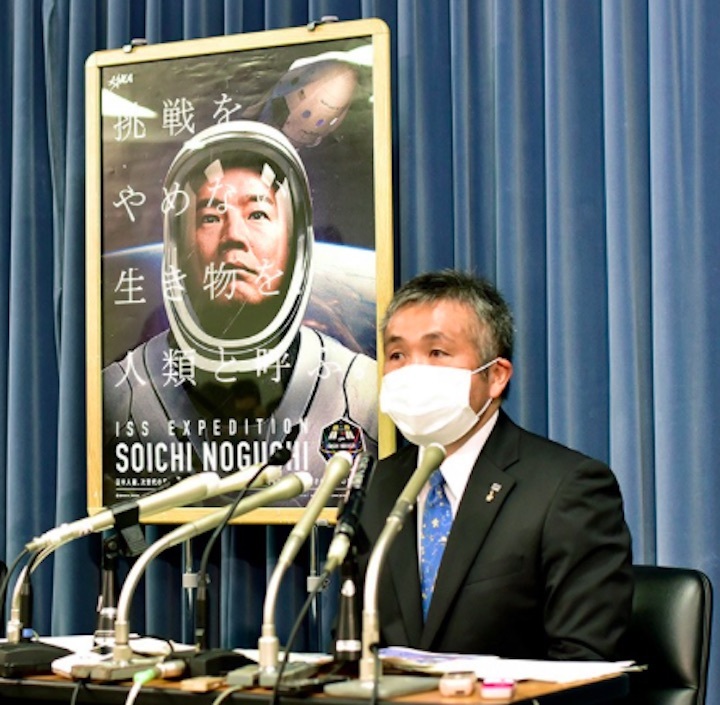6.11.2020

Astronaut Koichi Wakata speaks at a news conference on Oct. 23 at the science and technology ministry. (Shiori Ogawa)
In Japan's first astronaut recruiting pitch since 2008, veteran Koichi Wakata is asking young people to shoot for the stars--or at least the moon.
Japan will recruit astronauts who will be the trailblazers in the nation's lunar exploration program.
"It's a very rewarding job," Wakata, 57, said at a news conference. "I hope many people will be interested in it and young people will lead lunar exploration missions as we are taking a new step in lunar exploration and shifting away from the International Space Station (ISS) program."
The science and technology ministry and the Japan Aerospace Exploration Agency (JAXA) announced Oct. 23 they will start soliciting applications around fall 2021 and select several astronauts through a year-long screening process.
The government plans to solicit astronaut applications approximately every five years from now on with the intention of joining the U.S.-led manned lunar exploration missions on a continual basis.
When Japan and the United States shift their focus to lunar exploration in the coming years, astronauts will be expected to perform tasks they have never previously engaged in, such as driving a lunar exploration vehicle and searching for sources of water.
"In addition to abilities for working as a group and being able to work under a stressful environment, they must be flexible enough to cope with many different missions to acquire new skills required on the moon," Wakata said.
Private companies will join the screening process for the first time. Officials are considering ways to make use of the private sector's know-how and ideas to select and train astronauts.
So far, 12 Japanese astronauts have flown in space since Toyohiro Akiyama, who was a Tokyo Broadcasting System Television Inc. reporter, was sent into space in 1990. Mamoru Mori was JAXA's first astronaut aboard a NASA space shuttle in 1992, followed by Chiaki Mukai in 1994.
Mori, Mukai and Takao Doi initially served as mission scientists who only conducted experiments in the spacecraft. The three were not allowed to fly or operate the shuttle, not to mention operating equipment.
"I was treated like a guest," Mori once said. There was a world of difference between NASA astronauts (and myself)."
Japanese astronauts began taking more prominent roles as engineers responsible for operations of the space shuttle and construction of the ISS, starting with Wakata.
Wakata, a robotic arm specialist, helped build the ISS before Akihiko Hoshide completed the space station when he installed the final equipment on Japan's Kibo experiment module.
After the ISS started operation in full swing, there was a need for astronauts who could serve as commander. Wakata has already assumed the role, with Hoshide set to follow suit in or after next spring.
But overseas, there are many instances where experienced pilots served as commander. Such circumstances may have led Air Self-Defense Force pilot Kimiya Yui and Takuya Onishi, an All Nippon Airways Co. pilot, to be selected in the last astronaut search conducted in 2008.
Quelle: The Asahi Shimbun
